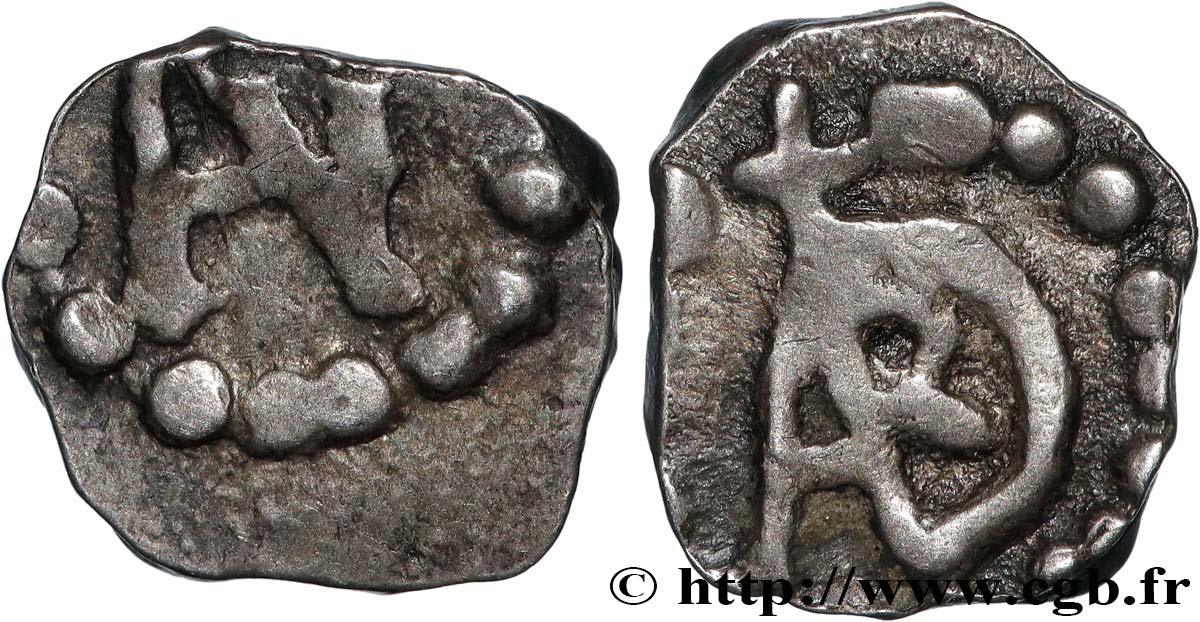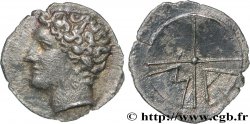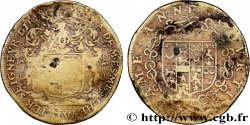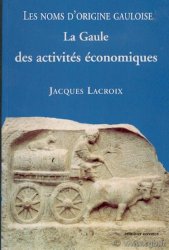Live auction - bmv_889837 - MEROVINGIAN COINAGE - ARLES (ARELATVM) or MARSEILLE (MASSILIA) Denier, patrice Antenor
You must signin and be an approved bidder to bid, LOGIN TO BID. Accounts are subject to approval and the approval process takes place within 48 hours. Do not wait until the day a sale closes to register. Clicking on "BID" constitutes acceptance of the terms of use of cgb.fr private live auctions.
Bids must be placed in whole Euro amounts only. The sale will start closing at the time stated on the item description; any bids received at the site after the closing time will not be executed. Transmission times may vary and bids could be rejected if you wait until the last second. For further information check the Live auction FAQ
All winning bids are subject to a 18% buyer’s fee.
All winning bids are subject to a 18% buyer’s fee.
| Estimate : | 600 € |
| Price : | 400 € |
| Maximum bid : | 530 € |
| End of the sale : | 05 March 2024 16:08:24 |
| bidders : | 1 bidder |
Type : Denier, patrice Antenor
Date: c. 700-726
Date: s.m.
Mint name / Town : Arles ou Marseille (13)
Metal : silver
Diameter : 10,5 mm
Orientation dies : 1 h.
Weight : 0,96 g.
Rarity : R3
Coments on the condition:
Ce denier est frappé sur un flan irrégulier et est décentré au droit. Monnaie recouverte d’une patine grise de médaillier
Catalogue references :
Predigree :
Monnaie provenant de la collection Philippe Schiesser
Obverse
Obverse description : Monogramme ANT dans un grènetis.
Reverse
Reverse description : Monogramme ARD sous une croix.
Commentary
Ce denier correspond exactement au Belfort n° 291 ; il se distingue du Belfort n° 290 par le grand D dans le monogramme du revers (absent sur le bmv_347061). Les deux monnaies Belfort 290 et 291 ont donné lieu à bien des interprétations. Fillon donne Antérieux, Ain (?). D’Amécourt, combinant les deux monogrammes [de la Belfort n° 291] y a vu le nom de Darantisia. Morel-Fatio y voit le monogramme d’Anténor et les attribue à Marseille. M. Laugier, admettant le monogramme d’Anténor, ne les accepte cependant pas pour l’atelier de Marseille. Son opinion est que ces monnaies ont été frappées par Anténor, à Arles. Cette ville a en effet porté les noms d’Arelatum et d’Aredis, qui seraient représentés par les monogrammes de l’avers. Les monogrammes du revers appartiendraient à Anténor. En présence de ces opinions diverses, A. de Belfort attribuait dubitativement ces monnaies à Arelatum. Cf. Belfort tome I, page 87. Anténor serait patrice de Provence vers les années 700-716 alors que G. Depeyrot classe ce denier à un certain Anténor II, patrice vers 715-726 (?).
This denier corresponds exactly to Belfort No. 291; it is distinguished from Belfort No. 290 by the large D in the monogram on the reverse (absent on bmv_347061). The two coins Belfort 290 and 291 have given rise to many interpretations. Fillon gives Antérieux, Ain (?). D'Amécourt, combining the two monograms [of Belfort No. 291] saw the name Darantisia there. Morel-Fatio sees the monogram of Anténor there and attributes them to Marseille. M. Laugier, admitting the monogram of Anténor, does not, however, accept them for the Marseille mint. His opinion is that these coins were struck by Anténor, in Arles. This city in fact bore the names Arelatum and Aredis, which would be represented by the monograms on the obverse. The monograms on the reverse are said to belong to Antenor. In the face of these diverse opinions, A. de Belfort doubtfully attributed these coins to Arelatum. Cf. Belfort volume I, page 87. Antenor was said to be patrician of Provence around the years 700-716 while G. Depeyrot classifies this denarius to a certain Antenor II, patrician around 715-726 (?)
This denier corresponds exactly to Belfort No. 291; it is distinguished from Belfort No. 290 by the large D in the monogram on the reverse (absent on bmv_347061). The two coins Belfort 290 and 291 have given rise to many interpretations. Fillon gives Antérieux, Ain (?). D'Amécourt, combining the two monograms [of Belfort No. 291] saw the name Darantisia there. Morel-Fatio sees the monogram of Anténor there and attributes them to Marseille. M. Laugier, admitting the monogram of Anténor, does not, however, accept them for the Marseille mint. His opinion is that these coins were struck by Anténor, in Arles. This city in fact bore the names Arelatum and Aredis, which would be represented by the monograms on the obverse. The monograms on the reverse are said to belong to Antenor. In the face of these diverse opinions, A. de Belfort doubtfully attributed these coins to Arelatum. Cf. Belfort volume I, page 87. Antenor was said to be patrician of Provence around the years 700-716 while G. Depeyrot classifies this denarius to a certain Antenor II, patrician around 715-726 (?)








 Report a mistake
Report a mistake Print the page
Print the page Share my selection
Share my selection Ask a question
Ask a question Consign / sell
Consign / sell
 Full data
Full data










